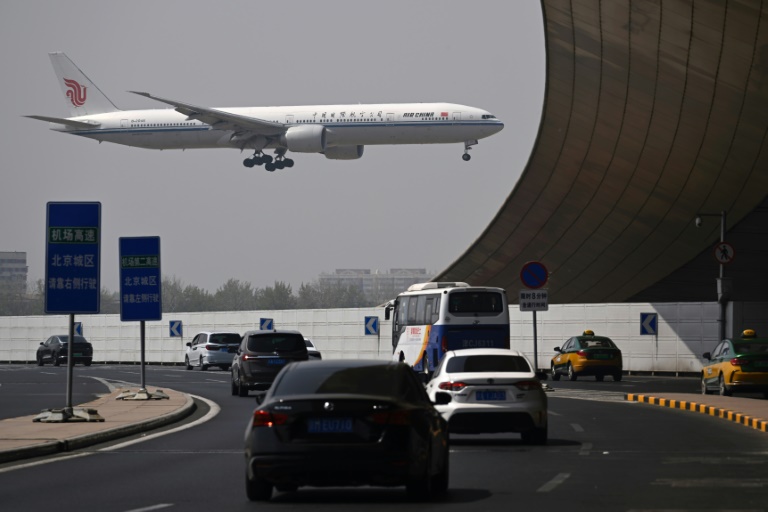On Friday (April 11), US stocks opened lower but quickly turned positive, with all three major indices closing higher, led by the Nasdaq, which rose over 2%. At the close, the Dow Jones Industrial Average was up 1.56% to 40,212.
71, the S&P 500 rose 1.81% to 5,363.36, and the Nasdaq Composite gained 2.

06% to 16,724.46. Among the 30 Dow components, only four stocks closed lower: Disney, Salesforce, Nike, and Travelers (TRV), while Apple, JPMorgan Chase, and NVIDIA led the gains.
In the S&P 500, the ratio of advancing to declining stocks was approximately 7:1. This week was arguably one of the most volatile in Wall Street history. The S&P 500 Volatility Index (VIX), known as the "fear gauge," briefly surged above 60, its highest level since August of last year, before pulling back to around 37 by Friday.
On a weekly basis, the S&P 500 rose 5.7%, its best weekly performance since November 2023; the Dow gained 4.95%, and the Nasdaq surged 7.
29%. Most of these gains came from Wednesday's rebound, when the Nasdaq soared over 12%. Darrell Cronk, president of Wells Fargo Investment Institute, wrote in a report: "We are still in the early stages of a global trade regime shift.
While the '90-day tariff pause' reversed the market sell-off, it only delayed the uncertainty." Mark Hackett, an executive at Nationwide, said, "Market sentiment remains bumpy. Against the backdrop of unresolved trade tensions, earnings uncertainty, and macro headwinds, the market is still searching for a foothold.
" Hackett believes, "While this week's gains in US stocks are encouraging, they should not be mistaken for a clear turning point." Hot Stock Performance Most major tech stocks rose (ranked by market cap): Apple gained 4.06%, Microsoft rose 1.
86%, NVIDIA climbed 3.12%, Amazon increased 2.01%, Google (Class C) advanced 2.
59%, Meta fell 0.5%, Broadcom surged 5.59%, and Tesla dipped 0.
04%. Among Chinese stocks, the Nasdaq Golden Dragon China Index rose 1.73% but fell 5.
3% for the week. Most popular Chinese stocks closed higher: Zai Lab surged 21.46%, Kingsoft Cloud jumped 12.
41%, XPeng Motors rose 11.3%, NIO gained 7.32%, Baidu climbed 5.
43%, Li Auto increased 4.4%, Alibaba advanced 3.41%, Pinduoduo rose 2.
43%, JD.com gained 2.36%, and New Oriental edged up 1.
08%. Tencent Music fell 2.08%, and TAL Education dropped 3.
61%. Company News [Tesla Halts Sales of US-Made Model S and X in China] Tesla's China website shows that the Model S/X no longer offers a standalone "Order New Car" option. The corresponding model pages now only display a "View Inventory" button, which leads to a list of available cars.
This means consumers can no longer directly customize new cars for these models through the website and can only choose from inventory or used cars. This adjustment coincides with a critical period of escalating tariffs under Trump. It is reported that both models are produced at Tesla's US factory.
[Stellantis Q1 Shipments Expected at Around 1.2 Million Units, Down 9% YoY] On April 11, Stellantis Group released its Q1 global shipment forecast, excluding joint ventures. As of March 31, 2025, shipments are expected to be around 1.
2 million units, down 9% YoY. This is mainly due to extended shutdowns in North America caused by the long holiday in January, leading to a decline in production in the region, as well as the impact of product transitions and declining light commercial vehicle sales in Europe. [Sources Say White House's Early Budget Plan Proposes Significant Cuts to NASA Science Funding] Two sources revealed that, according to the initial draft of President Trump's budget proposal submitted to Congress, NASA's science budget could be cut by nearly half, terminating ongoing and future missions worth billions of dollars.
The sources said the White House Office of Management and Budget (OMB) plans to allocate $3.9 billion to NASA's Science Mission Directorate, down from the current $7.3 billion.
NASA's astrophysics budget would be hit hard, dropping from around $1.5 billion to $487 million, while planetary science would fall from $2.7 billion to $1.
9 billion. Under the proposal, the Hubble and Webb space telescopes would continue to receive support, while other telescopes would not be funded..
Business

U.S. Stocks Close: Nasdaq Rises Over 2%, Leading Gains Among the Three Major Indices, Market Sentiment Fluctuations Continue















